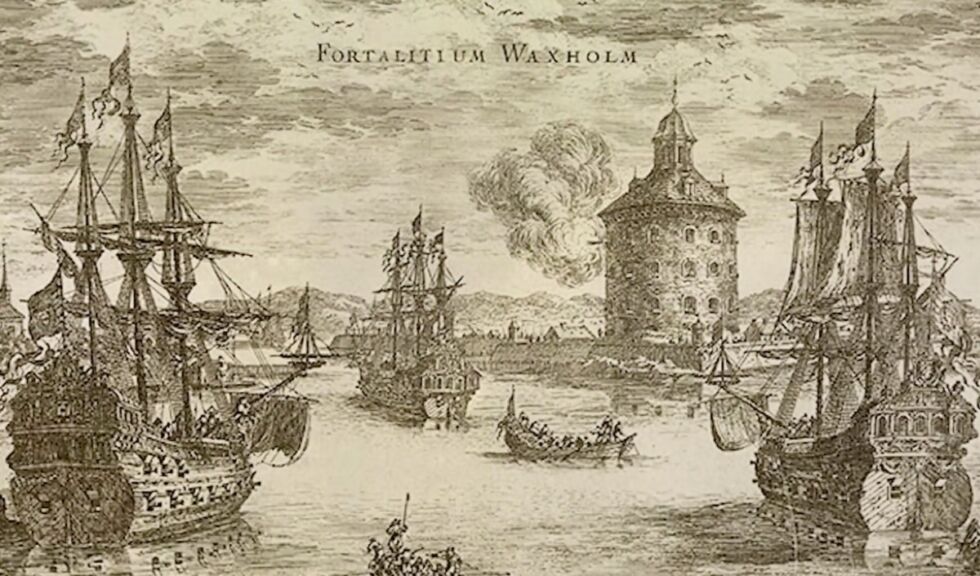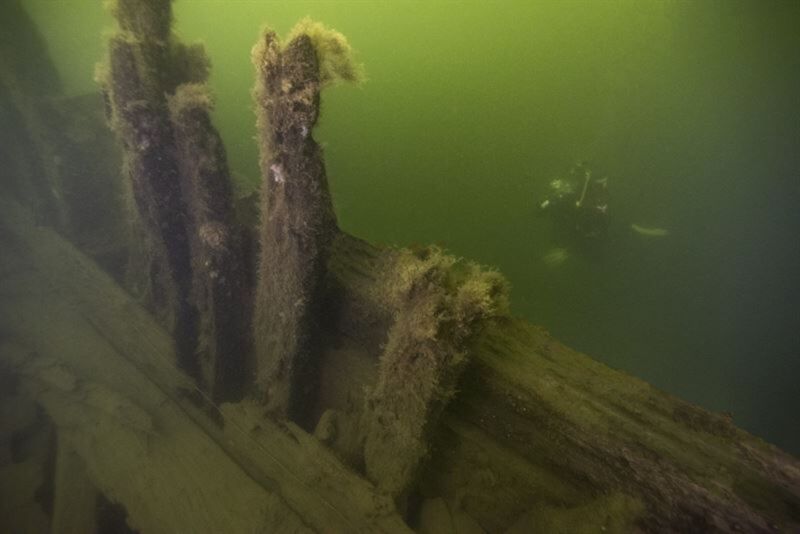400-year-old sunken warships aren’t the sisters of doomed Vasa after all
Wood analysis shows the wrecks discovered in 2019 are the warships Apollo and Maria
Back in 2019, Swedish maritime archaeologists discovered the wrecks of two 17th-century ships at the bottom of a busy Swedish shipping canal near Vaxholm. Initially they suspected these might be the sister ships of the doomed warship Vasa, which sank in 1628 on her first trip out of port. Thanks to analysis of wood samples obtained from the wrecks, we now know they are actually two slightly younger warships, the Apollo and Maria.
Wooden sailing ships were the high-tech military vehicles of their day, and Vasa and her sisters—Äpplet, Kronan, and Scepter, all built on the order of King Gustav II Adolf (1594-1632)—were among the earliest to carry large numbers of heavy cannon. The Vasa set sail for the first time on August 10, 1628, but as she sailed down the harbor, a strong gust of wind filled the sails and caused the ship to tip so far over to her port side that water poured into the open gunports on the lower deck.
The Vasa sank within minutes, and 30 crew members and guests perished with her, trapped inside the sinking ship. The catastrophe was largely due to a flaw in the Vasa's design: the hull's upper works were too tall and heavy, so its center of gravity was so far above the water, the ship would heel in response to even a relatively slight gust of wind. She might have yet survived had the gunports not been open. The wreckage of the Vasa was salvaged in 1961 and is now housed in the Vasa Museum in Stockholm.
The sister ships, built shortly after the sinking, had somewhat longer careers. As Kiona Smith reported for Ars in 2019, Äpplet sailed with the Swedish fleet to invade Germany in 1630, and Kronan and Scepter sailed against a combined Danish-Norwegian fleet in the 1644 battle of Kolberger Heide.
In the late 1600s, the Swedish navy scuttled the three aging warships to help control access to a narrow sea channel approaching Stockholm. A complex network of channels and straits weaves among the islands, but only two routes offer access to Stockholm by sea. The channel where the wrecked warships now rest is the larger of those two routes, and it's still in use today. Ferries and cargo ships now unwittingly pass within a few dozen meters of the 17th-century wrecks.
The area has seen almost constant construction since the 1500s to maintain the busy shipping channel and control access to the capital. In the years after the warships were scuttled, harbor defenses took the form of "stone coffins," which are enormous boxes built out of several whole logs and filled with large rocks. One of those coffins landed on the stern of the first wreck, smashing the timbers beneath it. And at some point, dynamite blasting farther out in the channel destroyed the port side of the second wreck.
In the late 1600s, the Swedish navy scuttled three aging warships to help control access to a narrow sea channel approaching Stockholm
First image of article image gallery. Please visit the source link to see all images.
There has never been a sonar survey of the area, so archaeologists had no idea what was down there. Project head Jim Hansson, a maritime archaeologist with Vrak—Museum of Wrecks in Sweden, and his colleagues braved the frigid water and the strong currents anyway in 2019. On one dive, the broad curves of a wooden hull suddenly emerged from the gloom before them. The next day, diving further out in the channel, they found a second wreck about 5 meters away from the first, end-to-end across the channel.
The divers took extensive measurements of the deck beams and frames, and they collected wood samples from both wrecks, which were sent off for radiocarbon analysis. That analysis concluded that the winter of 1646/1647 was the likely date when the oak trees used to make the ships were felled.
"When we dived on the ships, we got 'a Vasa feeling'—the timbers were huge, so one clue pointed to the possibility of finding some of Vasa's sister ships, which we know were sunk outside Vaxholm," said Hansson. "But the dates didn't add up. Vasa's sister ships, Äpplet, Kronan, and Scepter, were built shortly after Vasa sank in 1628. We wondered if the samples we had taken could have possibly come from parts of the ships that had been repaired, in the 1640s."
So they went diving again, bringing back more samples, and the analysis came to the same conclusion. Furthermore, one ship used wood from northern Germany, while the other used wood from eastern Sweden. The two wrecks couldn't be Vasa's sister ships. The team was able to use its measurements to get a solid estimate of the size and shape of the ships, sufficient to create digital reconstructions. A search of the archives turned up two likely matches, both warships built in 1648: the Apollo, built in Germany, and the Maria, built in Stockholm. Both ships were deliberately sunk at Vaxholm in 1677.
Maybe go smaller?
"The really big ships of the same type as Vasa were primarily King Gustav II Adolf's idea, and that idea died with him in 1632," said Patrik Höglund, assistant project manager. "After his death, medium-sized warships were built instead, since they could be used for many different purposes and were more seaworthy than the bigger unwieldy ships." Despite their smaller size, such ships were well-built to handle the weight of artillery. Both Apollo and Maria transported troops to Poland as part of a planned invasion by Charles X Gustav, and they took part in both the 1657 Battle of Møn and the Battle of the Sound the following year.
Many more shipwrecks are hiding in Vaxholm, including Vasa's sister ships, so there will continue to be diving expeditions and investigations—all part of an ongoing research project focused on Sweden's so-called "lost Navy." But for now, "The type of ships that Apollo and Maria represent have never before been documented archaeologically, and they have so much knowledge to convey," said Hansson.
400-year-old sunken warships aren’t the sisters of doomed Vasa after all
(To view the article's image gallery, please visit the above link)




3175x175(CURRENT).thumb.jpg.b05acc060982b36f5891ba728e6d953c.jpg)

Recommended Comments
There are no comments to display.
Join the conversation
You can post now and register later. If you have an account, sign in now to post with your account.
Note: Your post will require moderator approval before it will be visible.